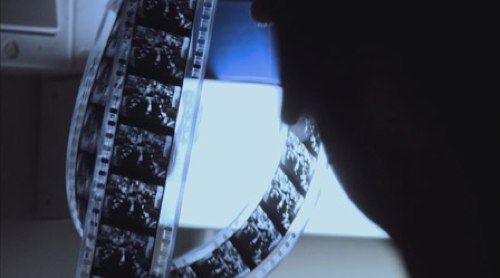REVIEW: Film Unfinished Leaves Haunting Impression of Nazi Imagemakers, Victims
Hersonki chooses not to identify the survivors, and at times we are not sure exactly what their faces, filmed in close-up, are reacting to, or if what she cuts to is what they have just seen. Occasionally a vaguely similar image is used to accompany a specific description: One woman describes a memory of an anonymous young woman lying on the sidewalk; an image that meets that description is shown. It is a very minor example of a larger problem in representations of the Holocaust: The images of countless atrocities have taken on an insidious sameness in the public imagination; they risk becoming interchangeable. That pervasiveness is both a testament to their power and a detriment to the memories of their subjects, seen and unseen, who were individuals, and whose suffering can never be adequately expressed. In the case of the example above I couldn't help but think the juxtaposition distilled the power of the living woman's memory and compromised the sovereignty of an unknown woman captured during the worst moment of her life.
Hersonski seems aware of this conundrum -- we must see to remember, but can never really know -- and occasionally includes scenes, like that depicting young children being shaken down for the vegetables they are smuggling, without context, leaving us unsure whether they were staged or not. What becomes clear, whether the subjects were being forced to perform their nightmare or simply live it, is that some images are beyond the scope of both history and human comprehension. Some images are in fact only what they are: pure horror.
In one of the most affecting scenes a survivor describes the numbness she developed to the skeletal bodies laid out on the street, a defense the living needed to go on. It served her, for a time. Then one day she stumbled on the street and lost her footing, falling not to the ground but onto what she instantly realized was a corpse. Her face was forced against his, and she couldn't turn away. "It was a human being," she says, dissolving at the memory of the truth she had been fending off to stay alive. The imperatives of history are manifold, and this film is among the most urgent of them. You cannot look, and you must look: This happened. They were human beings. All of them.
Pages: 1 2


Comments
As you say, the film lacks both modern context (like "Nuit et Brouillard") and emotional intimacy with its subjects. All we saw were repetitive nameless faces - both in the Nazi's film and the filmmaker's. The result is a decidedly intellectual film that leaves the audience feeling very little. And that is unfortunate, since it's exactly what the Nazi propaganda machine sought to do.
"The impression is designed both to reassure the outside world that the Jews are faring well in Warsaw, and that they are coldly indifferent to the starving and frequently stone cold wretches amongst them."
Hmm... that sounds familiar...
At this time I am going away to do my breakfast, once having my breakfast coming over again to read more news.
I used to be recommended this website through my cousin. I'm no longer sure
whether or not this submit is written via him as nobody else know such distinctive approximately
my difficulty. You are incredible! Thank you!